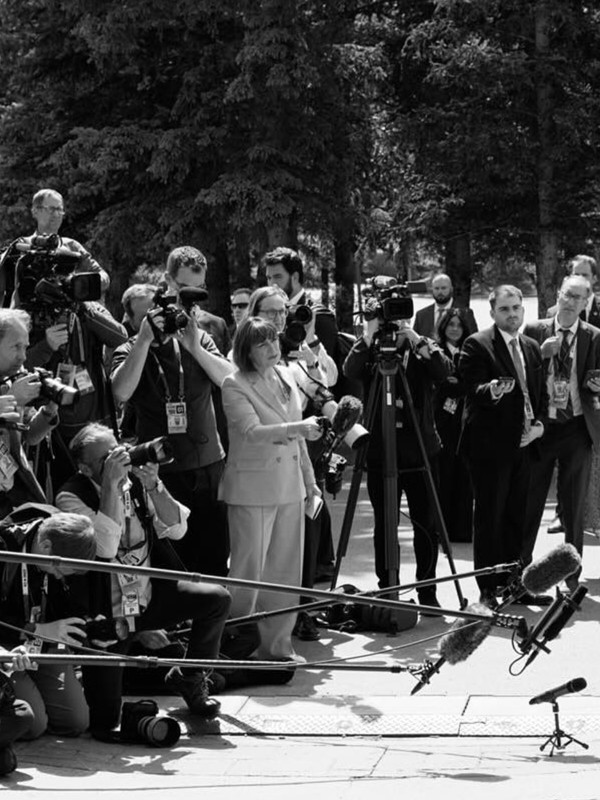Tips For Being More Effective With Your Emails At Work
1. Split Up Long Sentences
This sounds basic, but it’s one of the most effective techniques. We all know there’s a tendency to over-waffle in emails, but all those long sentences and – dare we say it – paragraphs are guaranteed to activate the snooze button in the reader’s mind. As such Patsy Nearkhou, content and digital marketer at Talkative, suggests breaking down those long sentences into separate lines: “One of the key reasons many professionals fire off emails is to ask and answer questions. The trouble is, people often don’t have time to read every single word of a full email,” she says. “We’re all guilty of skim-reading emails, but this could mean that important bit embedded within the middle of a sentence can be glanced over and missed.”
Patsy continues: “For the best chance of being read, make sure you place them on a separate line, near the top of the email and keep the wording a concise as possible. This way, the first thing they read is what you want them to action. The reader’s eye will also be instantly drawn to a shorter line, meaning they will be more likely to give you the answer you’re looking for. For example, this:
Hi Joe,
Hope you’re well. I was wondering whether you could let me know if you’ve managed to send those documents off to the client yet? I’m conscious that we are coming up to the deadline, and it can’t be left until the last minute.
Should be written like this:
Hi Joe,
Have you managed to send off the documents to the client yet?
The deadline is soon and it can’t be left until the last minute.
Hope you’re well and had a great weekend!
2. Cool It With The Exclamation Marks
Exclamation marks can be literary Marmite in emails, and we’re never quite sure how many is too many. Emma Heley, managing director at Thinking Hat PR loves an exclamation mark: “For me, it reinforces enthusiasm and positivity,” she tells us. But as with everything, there’s a definite limit. “If not used carefully, it can come across as unprofessional and sometimes even aggressive,” Emma adds. “One exclamation mark is fine to stress a point but using more than this could have an adverse effect, especially if the recipient is somebody you don’t know. Play it safe with a rule of ‘one or none’.”
3. Keep Your Headlines Short & Sweet
“The headline is the first thing the recipient sees and needs to be thoughtfully crafted,” says author and PR consultant Natalie Trice. This is why your headline is one of the most important parts of your email – what you’ve written in your email might be gold, but if you have a poor headline, the recipient will likely avoid opening it. Be aware that the typical inbox shows around 60 characters of an email’s subject line, while a mobile will reveal less – around 25-30 characters, “so use something that explains the subject in no more than seven words,” Natalie adds.
4. Arrange Meetings Efficiently
Arranging a meeting over email can be quite the nightmare, especially if you’re trying to arrange one with multiple people attending. But James Dunworth, director of ECigarette Direct, advises that you remain direct to avoid that dreaded long email chain: “Rather than asking to schedule a meeting sometime in the future, I give three specific times I’m available for a meeting and just ask which one is suitable.” Once everything is confirmed – and only then – send a calendar invite. Multiple invites will only add to the ire.
Often, you’ll have to send the same email to many people. But that’s no excuse to send a blanket email – each one should be personalised, and that way you’re more likely to get a reply. It doesn’t have to be very time consuming, but ensuring you put each person’s name at the top is crucial – none of this ‘Hey lovely!’ nonsense. And if you’ve met them before, then make a reference to it. “Mentioning a connection you’ve had with the person you’re emailing is a nice touch,” says Toby Levy, head of Business Development and Partnerships at BrighterBox.
Just make sure you’re spelling everyone’s name right – a wrongly spelled name will guarantee your email ends up in the recycling bin. “I often get emails addressed to ‘Nathalie’, which is just rude and shows a lack of interest and attention to detail. ‘Dear Editor’ is even worse,” says Natalie. “Each email you send should be unique, so add a personal touch if possible. This is a two-way relationship, so give a little back, and you will find this makes a big difference.”
5. Keep Colloquialisms To Yourself
Even if you feel like you know the person you’re emailing really well, it’s always best to avoid using more casual language in emails – you never know where your email might land or how well they’re going to take the pet names. “Unless that person is a real-life friend, hun, doll, darling and lovely are totally off-limits,” Natalie advises. Also, if you’re thinking about putting kisses at the end of a message, we have a piece of advice: don’t. Just don’t. Natalie has some particularly sage advice: “Go with kind regards or best wishes and save the kisses for your mum.”
6. Strike That Balance Between Friendly And Professional
We all want to find that elusive balance where we can be both friendly and professional at the same time, but as we’ve seen from all of the above, it’s not as easy as you’d first think. Emma says it’s about knowing your audience and tailoring your language to that: “It comes down to small tweaks in terminology. Unless it’s a senior or corporate contact, try a more informal ‘Hi’ rather than the more formal ‘Dear’. Personally, I’ve never been a fan of ‘Best wishes’ or ‘Kind regards’, it’s sounds a bit generic and cold. I’m a ‘Thanks so much’ kind of girl, but would recommend finding a sign-off that works for your personality, your industry and the recipient.”
7. Clear Inbox = Clear Mind
While not strictly an email writing tip, you’ll be in a much better headspace when it comes to writing emails if your inbox isn’t overloaded. “Make it a rule to clear all emails,” says James. “I do this first thing in the morning. I create labels for tasks that require further attention, including ‘Waiting For’ (which require action from somebody else), ‘Action’ (for longer tasks) and ‘Review’. This allows me to get in control of my day and my inbox.” That way, your inbox doesn’t become an unscalable mountain, leading to panicked emails.
8. Turn It Off
You could literally spend all day checking your emails - but don't. There are much better things you could be doing with your work time. Workplace communications expert and influence specialist Miti Ampoma, suggests only reading and replying to emails at set times of the day, and then turning off all notifications. So try checking them for one hour in the morning before switching them off and returning to your regular work, going back for a quick check in the afternoon. This way you'll get far more done.
DISCLAIMER: We endeavour to always credit the correct original source of every image we use. If you think a credit may be incorrect, please contact us at info@sheerluxe.com.






